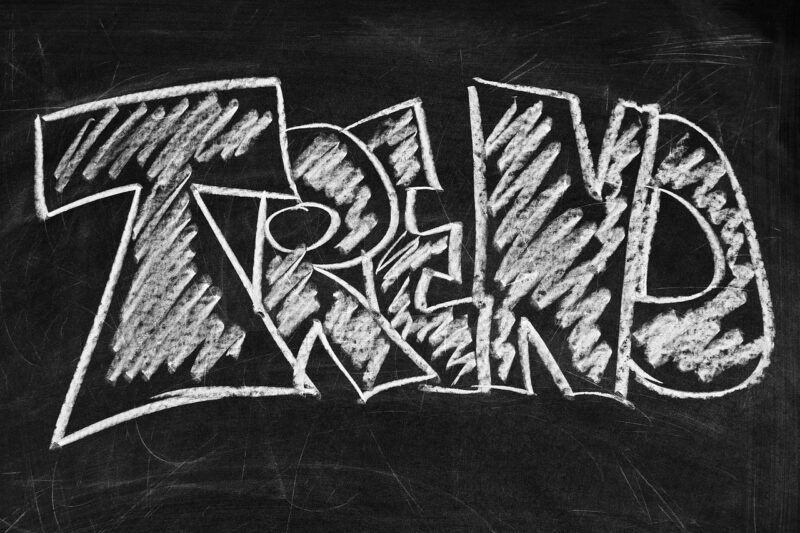The Cultural Shift Toward Nostalgia and the Resurgence of Retro Trends
November 18, 2024

In an era dominated by rapid technological advancements and constant innovation, one might expect that culture would continuously propel itself forward, always chasing the next big thing. However, a fascinating trend has emerged in recent years: a powerful cultural shift toward nostalgia and the resurgence of retro trends across various sectors, including fashion, technology, and entertainment. This article explores the reasons behind this nostalgia-tinged phenomenon and its implications for our current society and future.
Understanding Nostalgia: A Psychological Perspective
Nostalgia is fundamentally a complex emotional experience that can prompt individuals to reflect on and long for past experiences, usually seen as more favorable than current realities. It can evoke positive feelings, such as warmth and belonging, which is especially appealing in uncertain times.
Psychologists have explored the nuances of nostalgia. According to research, nostalgia offers several key benefits:
- Emotional Comfort: Nostalgia can serve as a coping mechanism during stressful times, helping individuals escape from their present anxieties by reconnecting with comforting memories.
- Stronger Connection with Identity: Reflecting on past experiences can reinforce a sense of self and continuity in identity, making individuals feel connected to their roots and heritage.
- Social Bonding: Sharing nostalgic experiences can strengthen social ties as people bond over common memories and collective experiences.
As society grapples with challenges, the pull of nostalgia becomes even stronger, prompting a collective shift back to culturally rich memories from the past.
The Retro Trend in Fashion: From Vintage to Modern Runways
Fashion has experienced profound changes over the decades, yet it remains one of the most influential segments where nostalgia manifests. In recent years, we have witnessed a revival of styles from the past as designers tap into the aesthetics of bygone eras.
From 70s bohemian styles to 90s grunge, fashion houses have reinterpreted vintage trends, leading to a significant upsurge in the popularity of thrift shopping and vintage clothing brands. For instance:
- Brands like Urban Outfitters have taken inspiration from previous decades, offering collections that echo the spirit of the 90s with oversized jackets and chunky sneakers.
- The resurgence of platforms like Depop and Poshmark highlights the consumer desire for unique, retro pieces that carry stories and history, allowing them to stand out from fast fashion.
- Influencers and celebrities have embraced vintage clothing, promoting the idea that retro styles are not just fashionable but also sustainable and environmentally conscious.
This swing toward nostalgia in fashion illustrates a longing for authenticity in a world dominated by mass-produced items, creating a robust market for vintage and retro-inspired apparel.
Nostalgia in Music: Replaying the Hits of Yesteryear
The music industry has also experienced a nostalgic renaissance, marked by the revival of past genres and the re-release of iconic albums. The following trends highlight this revival:
- Remixes and Covers: Contemporary artists frequently cover classic hits or incorporate retro sounds into their music, appealing to both generations who lived through these eras and younger audiences curious about musical history.
- Vinyl Resurgence: Vinyl sales have dramatically increased, with many music lovers seeking the tactile experience and rich sound quality of records. The revival of vinyl speaks volumes about society’s longing for authenticity and the tangible aspects of music consumption.
- Nostalgic Festivals: Concerts featuring classic bands or tribute performances have surged in popularity, offering fans a chance to relive fond memories associated with the music they once loved.
Nostalgia-fueled music trends encourage a beautiful blend of old and new, uniting diverse audiences through the power of song.
Technology: Retro Revival in Gadgets and Devices
Interestingly, the retro obsession has reached the field of technology, where vintage designs and functionalities are making a comeback. Numerous gadgets today draw inspiration from the aesthetics of the past, while offering modern functionalities:
- Retro Gaming Consoles: Companies like Nintendo have capitalized on nostalgia by releasing mini versions of classic consoles loaded with retro games, appealing to both older generations and younger gamers interested in gaming history.
- Instant Cameras: Devices like Fujifilm Instax have surged in popularity as people nostalgic for analog photography seek tangible prints in a digital world dominated by screens.
- Old-School Mobile Phones: Brands like Nokia have revived classic phone models, tapping into the desire for simplicity and decreased distractions. These models often attract younger audiences seeking a break from the chaos of modern smartphones.
This convergence of nostalgia and technology emphasizes not only the cultural significance of revisiting the past but also the cravings for simpler experiences in our hyper-connected world.
The Role of Media and Entertainment in Nostalgia
As a powerful medium, film and television have capitalized on nostalgia by reviving beloved stories and characters. The past few years have seen an explosion of reboots, remakes, and sequels that appeal to both original fans and new audiences:
- Classic Shows and Films Reimagined: Networks and streaming services have dove into their archives, revisiting shows from the 90s and 2000s, such as “Friends” and “The Fresh Prince of Bel-Air,” allowing a new generation to experience these cultural staples.
- Nostalgia-Driven Thematic Content: Content themed around past decades, like “Stranger Things,” has captured collective imaginations, bridging generational divides through shared experiences and memories.
- Guilty Pleasure Reality Shows: Shows that delve into past cultural phenomena, including fashion and music, remind audiences of simpler times, leading to increased interest and viewership.
In an era where content consumption is at an all-time high, leveraging nostalgia has proven to be a winning strategy for studios and brands alike, invoking sentiments that resonate deeply with audiences.
Conclusion: The Power of Nostalgia in Modern Culture
The cultural shift toward nostalgia and the resurgence of retro trends have unlocked a rich tapestry of emotions, memories, and shared experiences that resonate with individuals in today’s fast-paced world. From fashion and music to technology and entertainment, nostalgia has a unique way of providing an emotional refuge that not only comforts but also enriches our lives.
As society continues to navigate complex realities, the power of nostalgia will likely remain a potent force, blurring the lines between past and present while paving the way for the future. By celebrating everything that has come before, we cultivate connections with our history, create memories worth reminiscing, and inspire future generations to appreciate the beauty of their cultural roots.
Ultimately, nostalgia teaches us that while life moves forward, there is a profound value in looking back, cherishing the moments that shaped us, and remembering the trends that once made us who we are.







